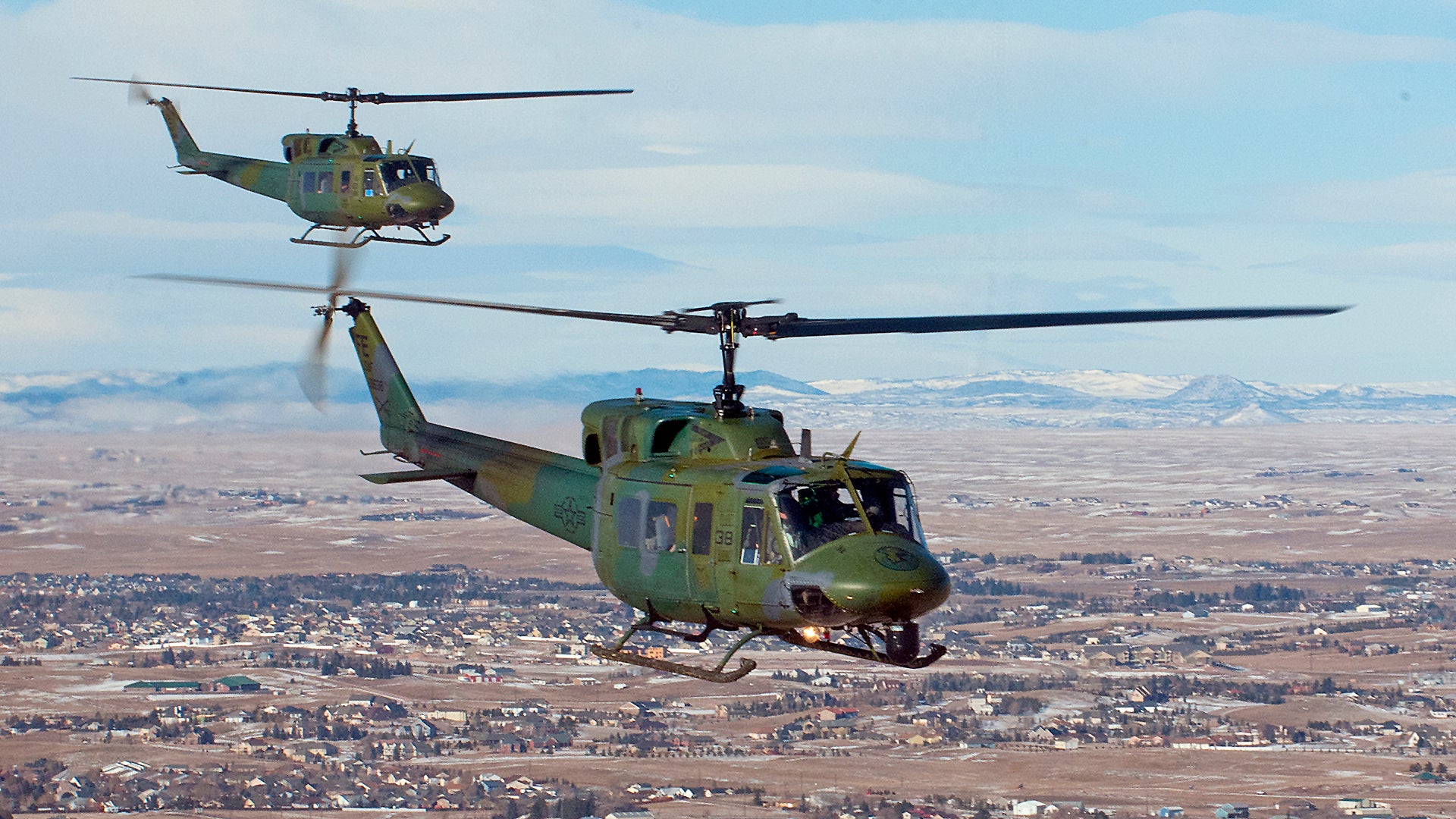The USAF’s Vietnam era UH-1N Twin Hueys have soldiered on decades longer than most anticipated. Today most serve as utility and security support helicopters for the Air Force’s ballistic missile farms, while a single squadron of them also cart VIPs around Washington. After multiple attempts to replace them with a more modern platform, the USAF seems focused on finally making this happen once and for all, releasing a draft RFP for bidders to furnish 84 new airframes.
Earlier this year the USAF said it would at least partially replace their Huey fleet with UH-60M Black Hawks, but that plan was withdrawn. Instead an open bidding competition is being executed for an off-the-shelf helicopter, with minimum requirements conservative enough that multiple manufacturers can participate.

According to Flightglobal, the helicopter must be able to carry nine equipped troops, have a range of at least 240 miles, endurance or at least three hours, and a cruise speed of at least 135 knots. Currently Sikorsky’s UH-60M, Airbus’s UH-72 Lakota, Leonardo’s AW139, and Bell’s UH-1Y are going to compete for the contract. All of these helicopters aside from the AW139 are currently in the DoD’s inventory.
Although the four choices at hand each offer their own advantages, the very fact that a modernized verison of the Huey is still a competitor for this same mission, even against very modern designs like the AW139, is a testament to the type’s longevity. Currently the UH-1Y is serving the USMC brilliantly, and like the Marines, maybe the USAF will decide that replacing a Huey with another holds some merit.

It is good to see the USAF move forward with replacing their antique UH-1s, but creative options other than buying new helicopters existed. In the past I have posited reworking the Air Force’s HH-60G fleet that is now slated for replacement by another S-70/UH-60 variant—which is a whole other issue onto itself—for the more mundane utility and VIP transport roles.
Alternatively, if a total helicopter force program were executed by the DoD, one that made the most out of all the helicopters in inventory across all the services, another already paid for replacement may have been available. For instance, the Army’s controversial decision to retire all Jet Ranger variants, including its fleet TH-67 and OH-58 training helicopters, and replacing them with the much larger, more expensive and complex UH-72 Lakotas was a laughably wasteful move.

Instead, 81 already in service but practically new UH-72s could have been transferred to the USAF to replace its UH-1Ns. Instead those helicopters are teaching Army pilots how to takeoff and land. Not just that, but another 108 UH-72s had to be purchased to fully equip the Army’s training fleet. Those funds could have been spent elsewhere.

Interservice asset allocation is maybe one of the most frustrating and frankly depressing ways the Pentagon’s chronic mismanagement rears its ugly head. But wishful thinking aside, at least the USAF will be getting a new helicopter type, or at least subtype, in the not so distant future.
Which helicopter, in service or new, do you think would be best to provide Washington DC big-wig limo service and for taking care of America’s ICBMs?
Contact the author Tyler@thedrive.com
